I first met Kenton Seth when he and I worked together on a story for the print edition of PITH + VIGOR. At the time, matrix gardening and matrix planting were very new terms and I had no idea what the fuss was all about (and tbh, as you will read below, Kenton was just figuring it all out as well). Its been many years since, but on the eve of Kenton’s first book (The Crevice Garden) being published this summer (with Filbert Press and my own lovely book agent Anna Mumford) – I thought I’d dig out this story and re-share it.
It reminds me how much we are all always growing and learning. Even the experts that you might look up-to are all just experimenting and figuring out things as well. This sense of practical science is one of the my favorite things about garden making and design.
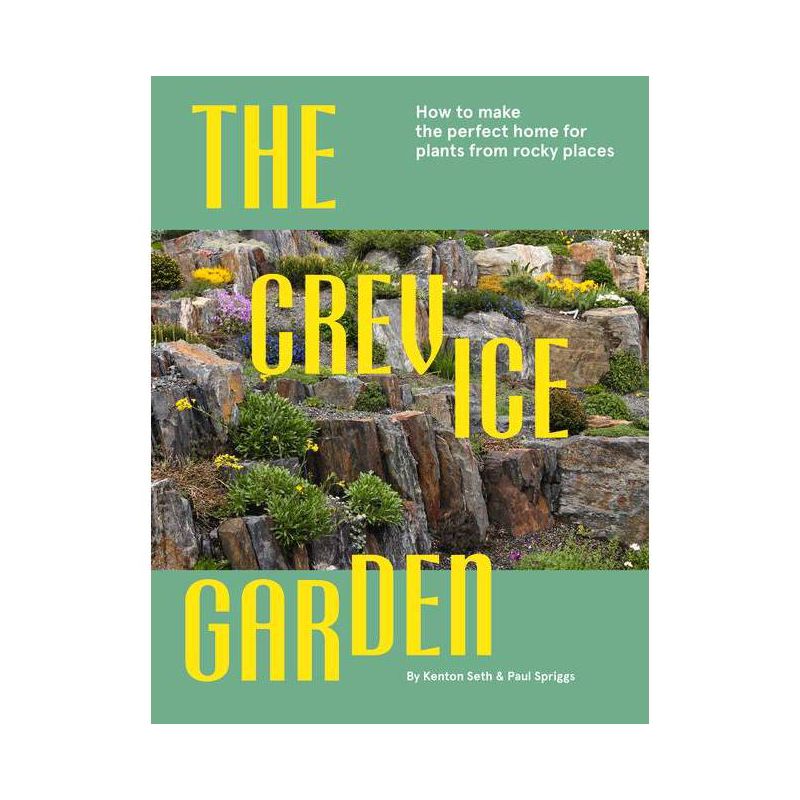
Our story took the form of a chat over a nice glass of wine. In the end, we even got some good earthy matrix/ terroir inspired drinking recommendations from my friend Adam Japko of winezag.com. So, in case you’re wondering why all the napkins and wine stains – this is the context.
A Chat with Kenton Seth About Matrix Planting (with wine)
by Kenton Seth
Here, have a glass of red.
Yep, it’s Cabernet.
Everything has been coming together for me lately. It has to do with that big design conundrum I told you about, and those nagging maintenance problems, too. And, it relates to those new, cutting-edge, garden design books I recently picked up.
This idea of matrix planting…have you heard of it?
The first time I read the term was in John Greenlee’s “The American Meadow,” and that flowing wild look gets taken to a new level entirely in “Plant Driven Design” by Lauren Springer and Scott Ogden.
Yeah, both are great books. Sexy pictures, too!
So, the dictionary says the matrix is a womb. It’s related to matriarch, matrimony and all that.
A womb. It’s at once a source of things and an environment in which a thing is embedded.
Still with me?
The matrix of a garden is obviously the dirt, the light and the water. Climate.
You know, stuff that a sophisticated gardener probably knows about. But could we make the matrix work for us?
Heck yes!
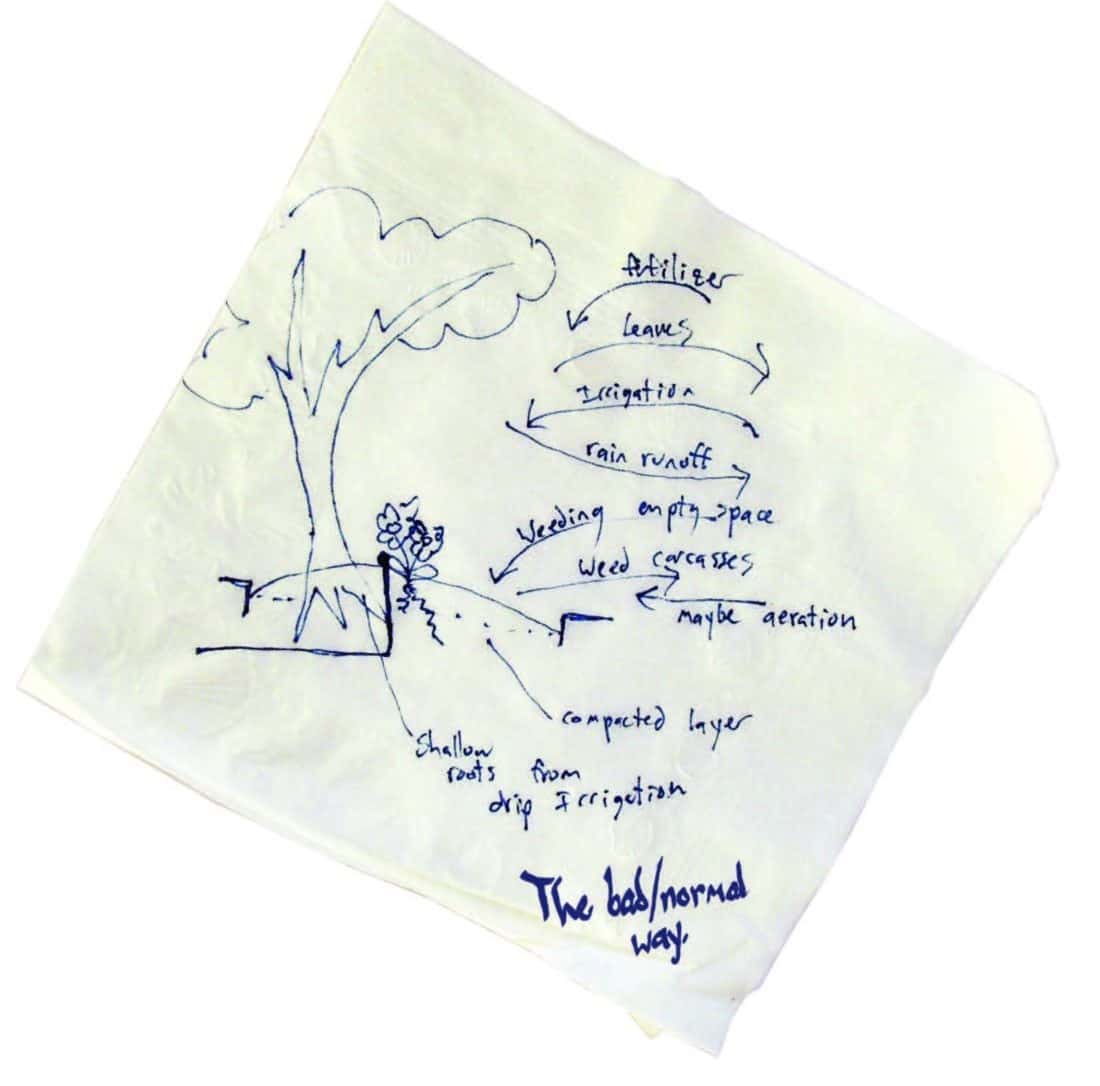
We already tend to think we’re honoring our local climate with our plant choices, but here is where I’d say we may need to re-examine our sense of reality.
Are you irrigating? If so, you’ve already taken a big step away from letting the matrix work for you.
When you are supplying more water, perhaps to accommodate certain plants, you’ve modified the environment. Adding water changes the climate of a patch of soil.
Boom. You’ve made a new micro-climate. You have water going in.
Now it can support more plants. Like weeds. So you’re going to have to pull them. And then later in the season, your plants start to drop their leaves, and so you remove them. But the leaves could have been fighting the weeds and fertilizing your garden, so maybe you could have designed it to let the leaves just be.
After all, you can hide them. Let me offer an example.
How’re you doing with your Cab?
So, this matrix thing is working with entropy, working with the prevailing winds of natural processes. I discovered it accidentally when I wasn’t looking in, of all places, my childhood garden.
It’s still there. I have access to it now and still dabble with it.
But back in the day, I’d removed the last remaining turf that was under the shade of two hardwoods in my parent’s front yard and created what became a crazy zoo of exotic plants, pruned and watered and fertilized.
And then I went to college.
The water-loving ferns and “tropicalesque” tarts dried up, the ivy expanded, the Hellebores re-seeded and bird droppings introduced Mahonias. The squill spilled its seeds into waves of blue in March, and any
perennial that was shorter than the default 6 inches of fallen leaves disappeared.
The fittest survived, and a new aesthetic developed.
And it wasn’t bad looking, either. A matrix was born.
But what is matrix planting?
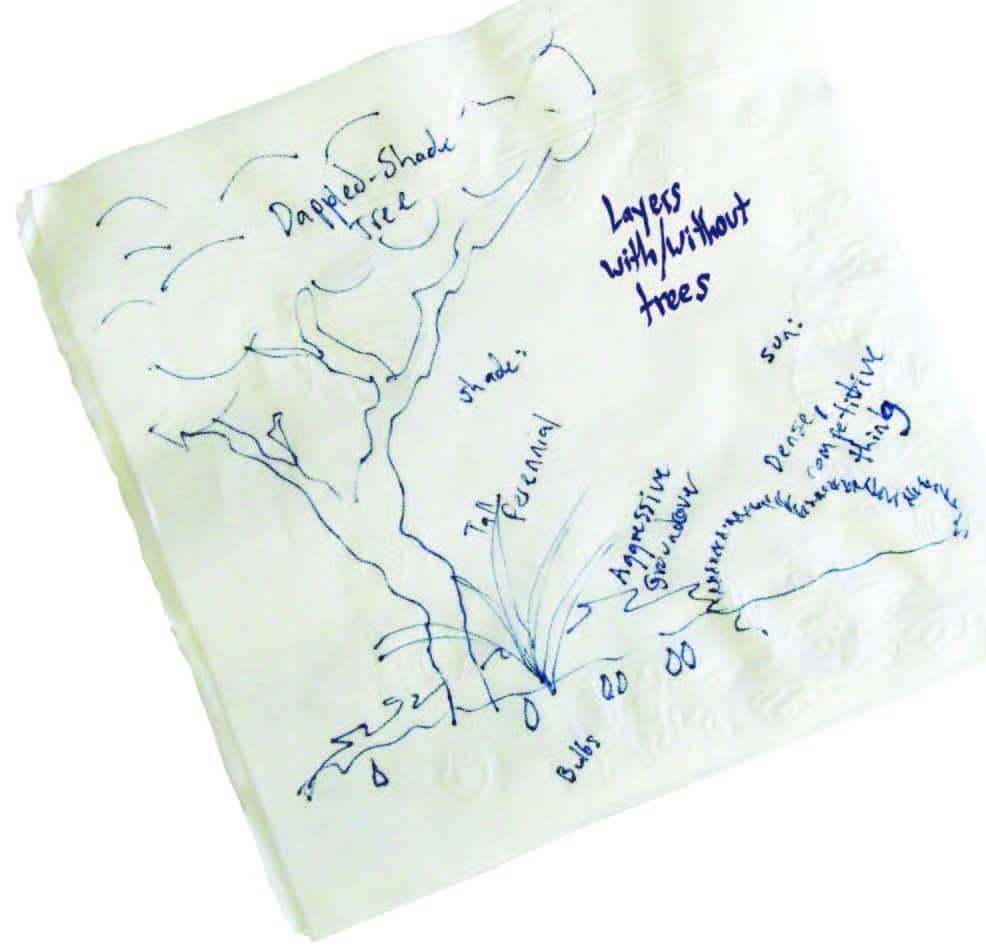
Now, when I visit my folks, I don’t rake, except the paths. The leaves go into the beds, where the plants remarkably subsume them because there is a healthy duff layer that eats it up. No mowing, almost no raking.
Oh, and weeds?
I get a few, about a dozen a year, but mostly in the last corner to fill up with the tougher plants. It’s brilliant and an accident. And you know what? It is the oldest and least maintained of any gardens I interfere with, and it steals my breath—just a little when I see it.
What’s the opposite of that? Take the classic berm planting, for example. As a landscape element, a berm sheds water. There are plants on top of it. But they need drip irrigation because it’s dry up there.
That’s nuts!
It’s making work.
It’s fighting physics!
I’ve come to really believe that “landscapes” as we know them, distinct from “gardens” and “farms,” should not, or need not, be irrigated.
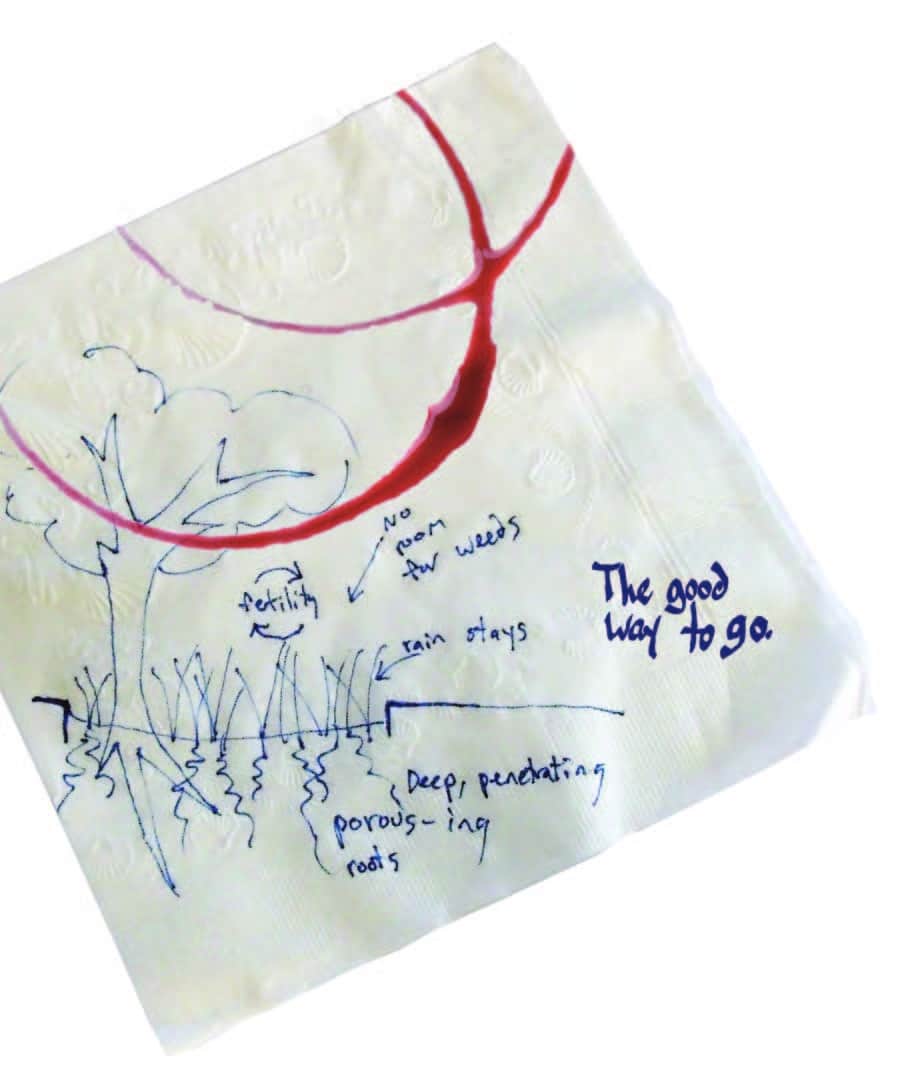
I mean, really, have you ever had a good time futzing with an irrigation box? It’s OK to modify the matrix, but we must be honest and realistic and work with what it provides.
Go big or go home. All or nothing.
And what if the soil isn’t any good, and you don’t want to fix it? Natives.
To paraphrase Dr. E. O. Wilson:
“There is a plant for every place, and a place for every plant.”
Dr. E. O. Wilson
Oh, another top-off? Yes, please, pour me, too.
The book “The Self-Sustaining Garden” by Peter Thompson, describes how you should look at your matrix, so that you can see its limitations and its assets.
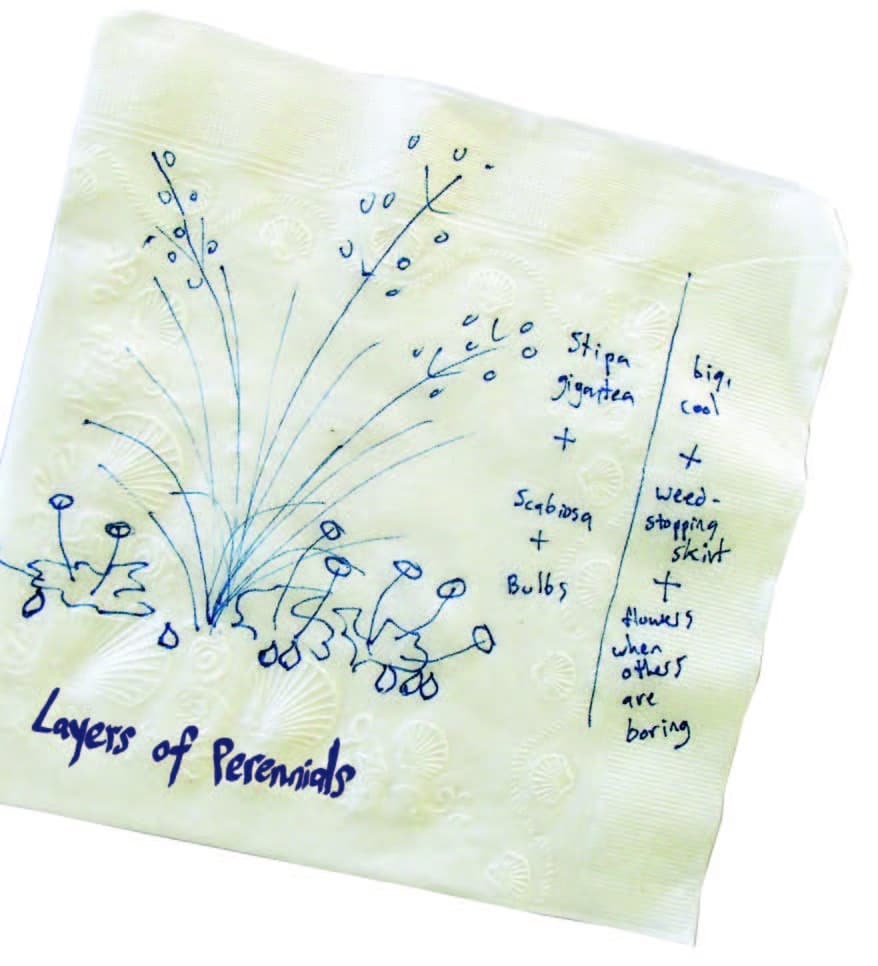
Filling up the Matrix
One of the main ideas of matrix planting is to fill it up. Use up everything, all the assets. If your plants don’t occupy all the space, weeds will. And weeds become work.
Thompson proposes a “layered” system. The filtered sun leftover from trees gets used up by ferns or some other part shade lover, and then the very last bits of the sun are used up by aggressive groundcovers, like bellflowers.
But Thompson points out it doesn’t have to be three layers: it could be one highly competitive space occupying a site-appropriate plant, like a dense Juniper or tight bunch of grass.
If you have weeds, then you have been putting leftovers out for them.
Which reminds me, a bit more wine?
I’ve been trying to work out my big design problem for my landscapes because they totally lack the “zing” I was looking for.
You know, the something special you immediately recognize when you see great works of art or a stunning vista in the wilderness?
Well, after twelve cups of chai down at the Nepalese restaurant, I think I figured it out!
Controlling Weeds with Matrix Planting Design
I was getting weeds because I wasn’t actually mimicking the biome of the site as much as I thought I was. There were not enough of or the right kind of plants.
Where I was getting swaths of weeds between the cacti, I should have put grasses there instead.
And, where I lacked glorious natural beauty? That was caused by being too limited to one kind of plant on the property: all grasses, all woodies, or all succulents.
The fact is, if nature were to design it, she’d use a bit of each of them, and each would have a favorite corner.
Aesthetically, each of those plant groups is also an artistic design strength! And you only need a couple of them to be working together at any given time if you are to achieve a year-round success.
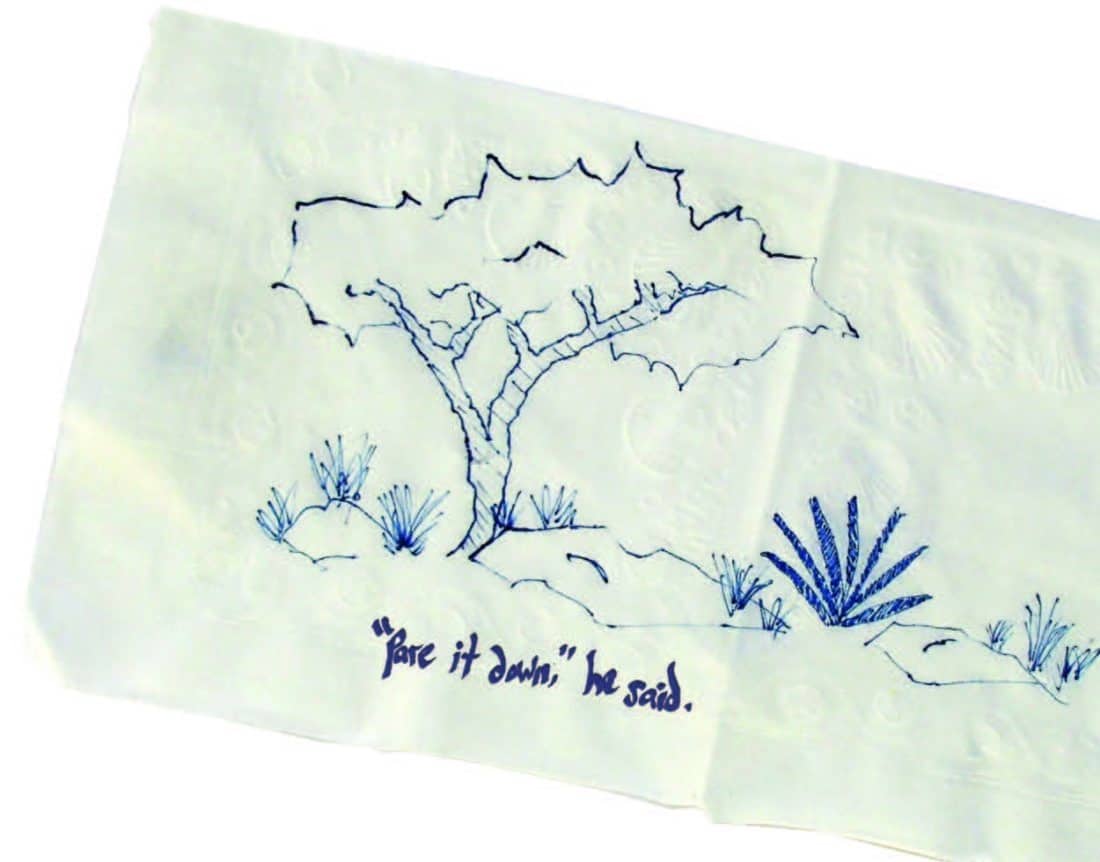
David Cristiani of The Quercus Group in El Paso, TX, pointed out to me that those stunning views in nature are almost always just a couple of visible species, but they are used in the right numbers. “Pare it down,” he said.
Take inspiration from nature – both the wild and the adapted versions. Nature mercilessly corrals plants where they are by using climate and soil (Adapt or die, baby!). Look around and learn something from the surviving plants at untended rental properties or frat houses. Use them as your palette to paint
something beautiful.
And just think, if we get it right, that means we can work less and drink more wine.
Cheers!
Posts that also Discuss matrix planting:
You might also be interested in the mini courses – Naturalistic Gardens with Kelly Norris delves into matrix planting in the context of creating locally appropriate gardens. Learn about all the mini-courses here.
Pour yourself a glass… Adam Japko of Winezag.com recommends Cabernet producers to love when expensive bottles of trophy wines are not your thing!
- O’Shaughnessy Estate Winery relies on vineyards on Howell Mountain and Mount Veeder near Angwin, CA. These Cabernets represent their very specific mountain terroir at bargain prices considering their excellent quality.
- Arnot-Roberts is at the forefront of the California wine revolution involving small lot, site-specific, Cabernets (and other varieties) of extraordinary quality. These wines fly in the face of the “jammy” Cabernets that dominated the California scene for so long. Arnot-Roberts offers a complex and satisfying drinking experience.
- Corison Winery has been making natural wines since 1987, longer than any of the new natural wine makers. They strive to find a balance between power and elegance, and their wines prove they stand up to time
+comments+